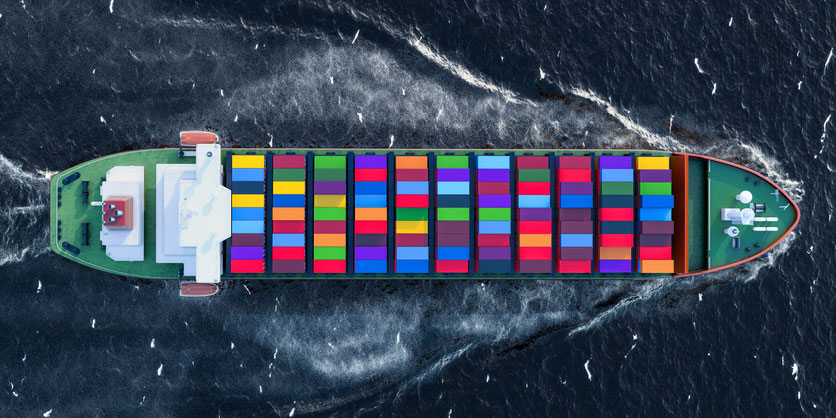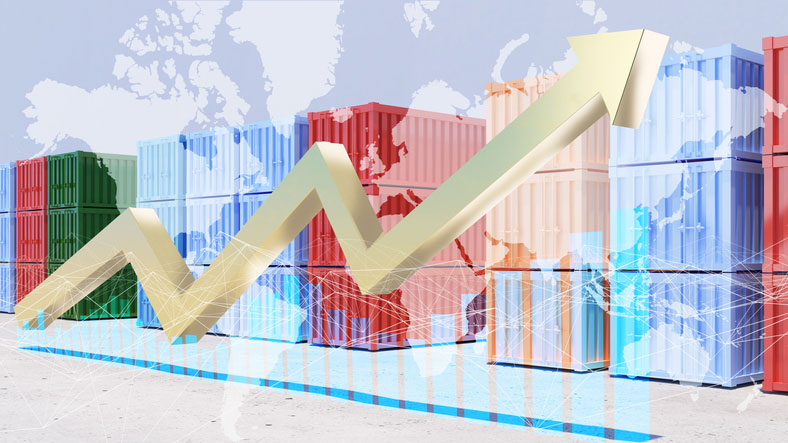Written by Scott Wilson
What is the Global Supply Chain Pressure Index? The Global Supply Chain Pressure Index (GSCPI) is a measure of tension in the international manufacturing and shipping markets that supply businesses around the world. Developed by the Federal Reserve Bank of New York, it brings together manufacturing data, shipping costs, and inventory data to show potential constraints in the global supply chain.

The COVID-19 pandemic was a watershed for the supply chain management profession.
In the modern logistics industry, there are two distinct eras: before the pandemic, and after the pandemic.
While the responsibilities, daily functions, and importance of supply chain management haven’t changed between the two eras, perspectives have. In the most dramatic way possible, the vulnerabilities and importance of the global supply chain were revealed to logistics pros, corporate leaders, government agencies, and the public.
That new awareness has sparked several new attempts to monitor and support international supply chains.
The Global Supply Chain Pressure Index (GSCPI) is the brainchild of economists working at the New York Fed. And it’s become a valuable tool for supply chain managers in every industry to track imminent impacts on their own international trade routes.
How the Global Supply Chain Pressure Index Came About

Despite a clear need for objective metrics showing the strain on international supply chains, they are a very complex set of processes to monitor. Even individual corporations may not have complete insights into all the factors putting pressure on their logistics operations.
The GSCPI looks at twenty-seven different variables across seven trade zones, three continents, and two previously existing global shipping indices. Going back to 1997, the earliest date where all the data is available, the index provides a relative picture of total strain in the system.
For most of the range, the index hovered around the -0.5 mark. Occasional jumps into positive territory coincide with the Great Recession, the massive Tohoku earthquake and tsunami that roiled Japan’s auto manufacturing industry, and the U.S.-China trade disputes in 2017 and 2018.
The index never crossed +2 for any of those incidents.
Then came COVID.
In 2020 and 2021, the GSCPI popped up over +4. It didn’t drop back down below the average line again until February of 2023.
What Factors Go into Calculating the Global Supply Chain Pressure Index?

The GSCPI wasn’t invented until 2022. The numbers for prior years were calculated after the fact. In other words, it has a fairly short track record of real-world use.
The core indicators it feeds from are long-standing measures of productivity and costs, however. The index draws on measures including:
- The Baltic Dry Index, a measure of raw material shipping costs
- The Harper index, an indicator showing container shipping rate changes for different class sizes of container ships
- The Bureau of Labor Statistics price indices for air transport between the United States, Asia, and Europe
- A variety of components from the Purchase Manager Index survey data for the Eurozone, China, Japan, South Korea, Taiwan, the United Kingdom, and the United States
Some historical data are derived from the Institute for Supply Management’s (ISM) manufacturing surveys.
The GSCPI is not an official estimate of the Fed. Instead, it is best viewed as a proposal by the expert economists at the Federal Reserve Bank of New York to provide a new measure for a key component of the economy that clearly wasn’t getting enough love prior to the pandemic.
Understanding the Implications of the GSCPI Level Requires a College Education

Like any kind of index or statistic, the GSCPI has limitations and caveats. Interpreting it isn’t straightforward. Supply chain managers know that the map is not the terrain—any kind of number or metric provides a limited window on reality.
But that doesn’t make metrics worthless. Instead, it means that supply chain managers must understand the limitations and know how to apply the knowledge.
These are all concepts that come with a degree in supply chain management.
While those degrees are available at every level of college, all the way from associate programs up through elite post-graduate studies, it’s going to be bachelor’s and master’s programs where this kind of interpretive skill is primarily taught.
These in-depth studies take in not just supply chain principles, but general logic, economics, accounting, and social studies. They may offer electives that teach statistics or other important tools for reasoning.
That means graduates come out with the skills to evaluate claims that the GSCPI components are over-aggregated from the available data or include too much latency to be useful. And they have the economic and social sciences exposure to think about whether it’s a problem that the index doesn’t include labor variables or discounts overall market demand.
Ultimately, supply chain executives and managers will have to decide how heavily to factor the GSCPI into their calculations. But simply knowing about the index and understanding that major government and financial players are watching it is important in and of itself.







